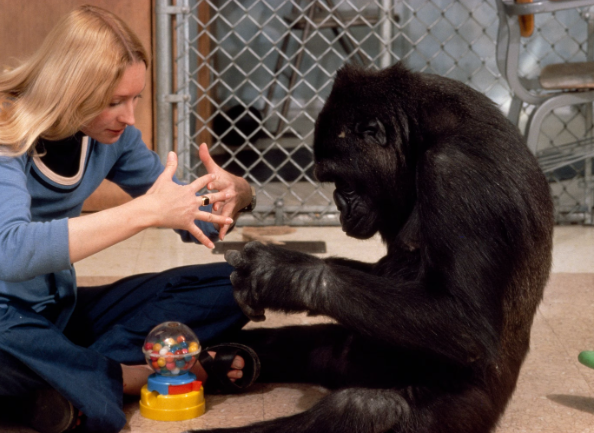Can Gorillas Learn Sign Language?
The ability of animals to communicate with humans has always fascinated researchers and the public alike. Among them, gorillas stand out due to their cognitive capabilities and complex social structures. Understanding whether gorillas can learn sign language not only sheds light on their intelligence but also deepens our connection to these magnificent creatures.
The History of Gorilla Sign Language Studies
The journey of understanding gorillas and sign language began in the 1960s with the pioneering work of Dr. Francine Patterson and Koko, a female gorilla. Dr. Patterson taught Koko American Sign Language (ASL) and documented her ability to understand and use signs. Koko was known for her ability to express emotions, ask questions, and even create new signs for concepts she couldn’t directly convey, demonstrating remarkable cognitive flexibility. This groundbreaking research opened the door to further studies on linguistic capabilities in non-human primates, leading to revolutionary insights into their cognitive landscapes.
The Cognitive Skills of Gorillas
Gorillas possess significant cognitive skills that enable them to learn and use sign language. Their large brains, complex social behavior, and emotional depth all contribute to their ability to communicate. Studies have shown that gorillas can grasp basic vocabulary, symbols, and the overarching concept of language itself. They can also engage in simple conversations with humans, expressing needs and feelings through signs. This ability challenges traditional views on language, suggesting that communication is not exclusively human but may be more widespread across species than previously thought.
Building Emotional Connections Through Communication
The ability for gorillas to learn sign language enhances not only their lives but also the emotional bond they share with humans. When gorillas can express their basic needs, desires, and emotions through signs, it fosters a deeper understanding between species. For example, Koko often signed about her feelings of joy, sadness, and even love, offering a glimpse into her emotional world. Such interactions contribute to better care and understanding of gorillas in captivity, encouraging conservation efforts and promoting empathy toward these animals in the wild. The relationships formed through this unique method of communication significantly enrich both the gorillas’ and caregivers’ experiences.
Conclusion
The exploration of gorillas learning sign language is a remarkable testament to the complexities of animal intelligence and communication. By studying these incredible beings, we not only learn more about their capabilities but also enhance our understanding of our own language and emotional connections. If you’re fascinated by this topic, consider diving deeper into the world of gorilla communication and the ongoing research that continues to challenge our perceptions of language across species!

